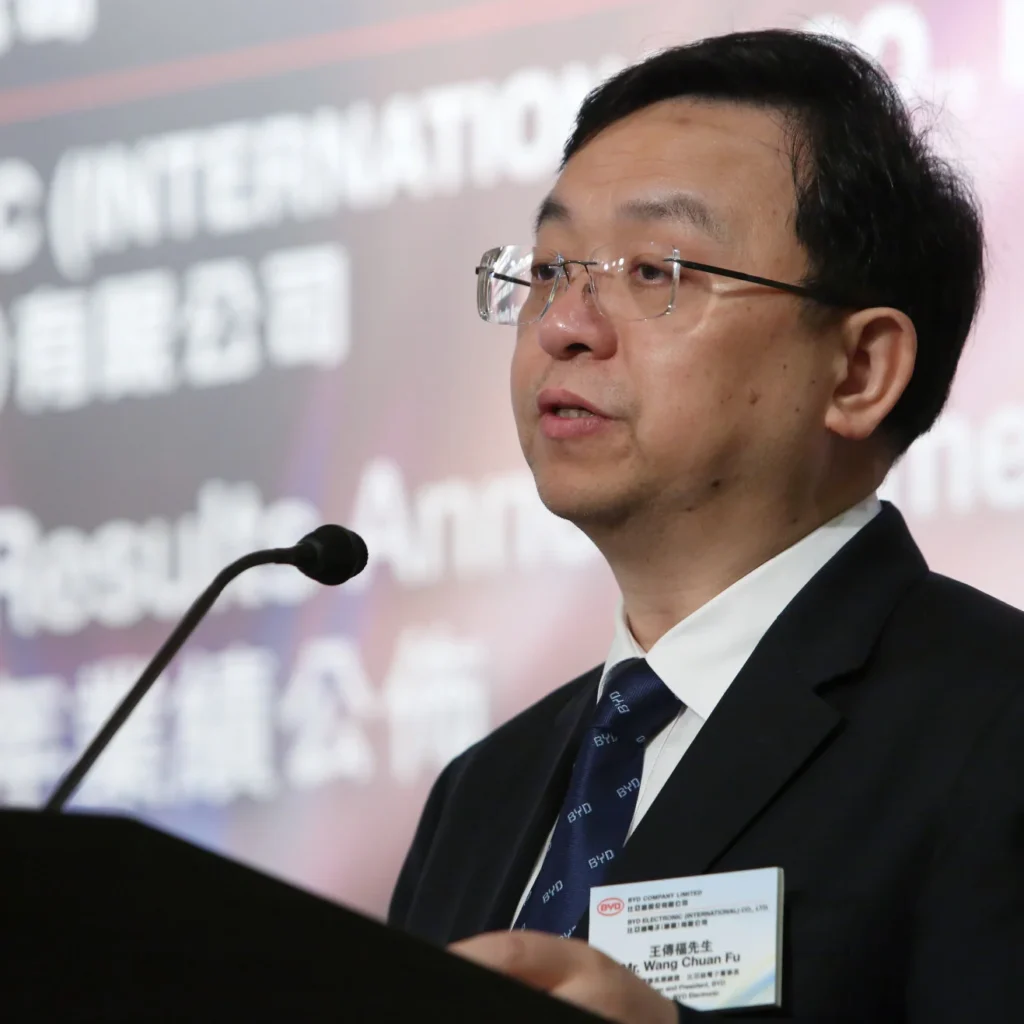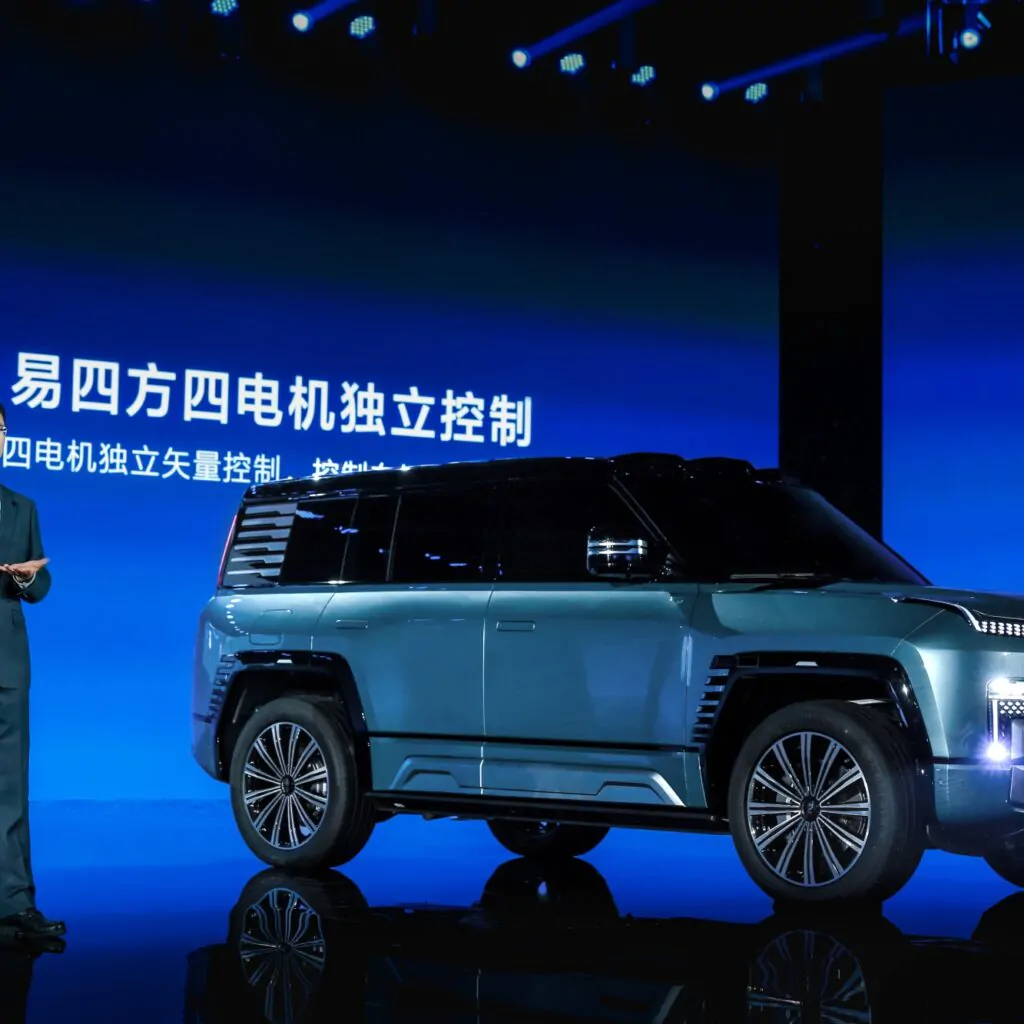Table of Contents
- Introduction
- Chapter 1: The Rise Of Tesla
- Chapter 2: Warren Buffett And The Emergence of BYD
- Chapter 3: The Birth of BYD Auto
- Chapter 4: Warren Buffett’s Vote of Confidence
- Chapter 5: Rise Of BYD
- Chapter 6: BYD’s Final Blow
- Chapter 6: Tesla’s Response
- Chapter 7: The Future of Electric Mobility
- Conclusion:
- FAQ’s:
Introduction
In the electric vehicle (EV) arena, there’s a tale of two titans: Tesla, led by the enigmatic Elon Musk, and BYD, backed by the legendary Warren Buffett. But this isn’t just a clash of corporations—it’s a story of ambition, resilience, and the pursuit of a cleaner, greener future. Join us as we dive into the riveting narrative of how BYD emerged from the shadows to challenge Tesla’s throne.
Watch Full Video here:
Chapter 1: The Rise Of Tesla
Picture the year 2020, a time when Tesla’s star shone brightest in the EV galaxy. With sleek designs and revolutionary technology, Tesla’s vehicles, spearheaded by the iconic Model S, captured the world’s imagination. Investors flocked to Elon Musk’s vision, propelling Tesla’s stock to stratospheric heights and making it the undisputed king of the automotive realm. But little did they know, a new challenger was about to step into the ring.

Chapter 2: Warren Buffett And The Emergence of BYD
Wang Chuanfu’s journey towards founding BYD (Build Your Dreams) was shaped by not only his early struggles but also by his dedication to education and his early career experiences. Born into a farming family in China’s Anhui province in 1966, Wang’s upbringing instilled in him a deep appreciation for hard work and resilience.
Growing up in a rural village, Wang faced significant challenges from a young age. Tragically, both of his parents passed away when he was still a teenager, leaving him orphaned and without a safety net. Forced to fend for himself, Wang’s life took a dramatic turn as he struggled to navigate the harsh realities of poverty and loss.
Wang’s academic journey led him to pursue a degree in Chemistry, a field that would later prove instrumental in shaping his career path.
In his early career, Wang worked as a government researcher, where he honed his skills and gained valuable insights into the world of technology and innovation. His time in this role provided him with invaluable experience and laid the groundwork for his future endeavors.
However, Wang’s true passion lay in entrepreneurship and innovation. In 1995, he took a bold leap of faith and founded BYD, recognizing a golden opportunity in China’s burgeoning rechargeable battery market. With a vision to revolutionize the industry and a relentless drive to succeed, Wang embarked on a journey that would change the course of automotive history.

Chapter 3: The Birth of BYD Auto
While Tesla dominated headlines, BYD toiled away, laying the foundation for its automotive empire. Wang’s audacious move to acquire Quinchuan Auto in 2003 marked the beginning of BYD Auto’s journey. Starting with conventional vehicles, BYD’s F3 caught the industry off guard, becoming a surprise hit and foreshadowing its future success. Meanwhile, Buffett’s vote of confidence in BYD sent shockwaves through the financial world, signaling the arrival of a new contender.

Chapter 4: Warren Buffett’s Vote of Confidence
Wang Chuanfu’s journey garnered significant admiration, with one notable admirer being Carlie Munger, Berkshire’s Vice Chairman and Warren Buffett’s partner.
Witnessing Munger’s enthusiasm for Wang and BYD, Buffett dispatched his trusted associate, David Sochol, to China to assess BYD’s operations firsthand. Impressed by what he saw, Buffett extended an offer to purchase a quarter of BYD.
However, Wang remained steadfast, refusing to sell more than 10% of the company.
Buffett’s admiration for Wang’s commitment to his company was evident when he remarked to Forbes magazine that Wang’s reluctance to sell signaled a promising future. In September 2008, amidst financial turmoil, Buffett acquired 10% of BYD, amounting to 225 million shares, for 230 million dollars. This investment has since been hailed as one of Buffett’s most successful ventures.

Chapter 5: Rise Of BYD
With a fresh influx of capital and newfound confidence stemming from backing by the ‘Oracle of Omaha,’ Wang Chuanfu sharpened his focus on his mission.
In 2011, BYD launched the fully electric BYD E6, which gained popularity in numerous Chinese cities, particularly as taxis. The E6 also found its way to Europe and the United States, where it was utilized by prominent ride-sharing services like Uber.

Building on this success, BYD introduced the next generation hybrid car, the BYD Han, in April 2012. Boasting improved specifications, the Han swiftly became one of the world’s top-selling hybrid vehicles, marking BYD’s definitive entry into the global automotive market.
But Elon still did not consider BYD a true competition to Tesla.
Chapter 6: BYD’s Final Blow
In 2016, BYD underwent a transformative shift when it appointed Wolfgang Egger, former design chief at Audi and Alfa Romeo, to lead its design team. This strategic move underscored BYD’s commitment to elevating its design standards to global benchmarks. Additionally, BYD attracted top international talent, including executives from renowned brands like Ferrari and Mercedes-Benz, further enriching its design expertise.

Fast forward to the present day, BYD boasts a diverse portfolio comprising hybrid and fully electric vehicles, having ceased production of fuel-powered cars as of March 2022. Notably, its flagship model, the Yangwang U8 sport utility vehicle, commands a premium price of 1.09 million yuan ($152,600), showcasing BYD’s dedication to crafting luxury and high-performance vehicles.
Furthermore, BYD has emerged as a powerhouse in the automotive battery industry, ranking second globally behind Chinese firm CATL. Its revolutionary blade battery, introduced in 2020, stands out for its unparalleled safety, stability, and energy density. This battery not only powers BYD’s own vehicles but is also supplied to competitors like Toyota and Tesla, underscoring BYD’s control over a significant portion of the supply chain.
BYD’s vertical integration strategy extends beyond batteries to encompass lithium mining, vehicle manufacturing, semiconductor production through its subsidiary “BYD Semiconductor,” and even shipping operations. This comprehensive approach highlights BYD’s commitment to autonomy and efficiency across its entire supply chain.
In a bold move to secure its shipping activities, BYD invested $710 million in October of the previous year to acquire six ships, each capable of transporting 7,700 cars. This strategic investment underscores BYD’s determination to become the most integrated automobile company globally, relying on its self-sufficiency to drive growth and expansion.
In summary, BYD’s ambitious vision, conceived over 15 years ago, is rapidly materializing into reality. Despite initial skepticism, BYD’s relentless pursuit of excellence and vertical integration strategy position it on track to become the largest and most influential car company globally.
Chapter 6: Tesla’s Response
As BYD gained momentum, Tesla faced mounting pressure to defend its turf. Elon Musk responded with characteristic vigor, unveiling groundbreaking vehicles like the Model 3 and Model Y. Tesla’s Gigafactories showcased its ambition to scale up production and meet growing demand. The rivalry between Tesla and BYD intensified, captivating the attention of investors and consumers worldwide.

Chapter 7: The Future of Electric Mobility
As we gaze into the crystal ball, one thing is clear: the future belongs to electric vehicles. Tesla and BYD are at the forefront of this revolution, each charting its own path towards a cleaner, greener future. While Tesla boasts global recognition and cutting-edge technology, BYD’s integration and strategic partnerships give it a competitive edge. As the world embraces EVs, Tesla and BYD stand poised to lead the charge into a new era of transportation.
Conclusion:
In the annals of corporate history, the rivalry between Tesla and BYD will be remembered as a clash of titans. Elon Musk and Wang Chuanfu, two visionaries driven by a shared passion for innovation, have reshaped the automotive industry and redefined what’s possible. As they continue to push the boundaries of technology and sustainability, one thing is certain: the future of transportation is electric, and Tesla and BYD are leading the way.
FAQ’s:
Who Is Winning Between BYD and Tesla?
BYD’s Current Edge:
1. Quarterly Sales: In the fourth quarter of 2023, BYD surpassed Tesla in global electric vehicle sales. BYD delivered 526,409 electric cars compared to Tesla’s 484,507, signaling a significant quarterly momentum [source on electric vehicle sales figures]. Although Tesla maintains an annual sales lead for 2023 (1.8 million vs. 1.57 million), BYD’s quarterly surge is noteworthy.
2. Market Focus: BYD has strategically capitalized on China’s burgeoning EV market, which commands over half of global EV sales [source on China’s EV market share]. Their emphasis on affordability and targeting the domestic market has been pivotal in driving their growth.
3. Affordability Strategy: Offering a diverse range of electric vehicles at competitive prices, BYD appeals to a broader market segment, particularly in price-sensitive regions like China.
4. Battery Technology: BYD’s Blade Battery stands out for its safety, extended driving range, and cost-effectiveness. Notably, they not only integrate it into their own vehicles but also supply it to competitors, including Tesla.
5. Vertical Integration: With control over a significant portion of its supply chain, from lithium mining to car manufacturing, BYD reduces reliance on external factors and potentially lowers production costs.
However, Tesla Still Holds Advantages:
1. Brand Recognition: Tesla enjoys strong global brand recognition synonymous with innovation and luxury electric vehicles.
2. Geographic Reach: With a wider presence in established and emerging EV markets globally, Tesla has an edge over BYD in terms of geographic reach.
3. Autonomous Driving Technology: Tesla’s advancements in self-driving technology are notable and could serve as a significant selling point in the future.
Conclusion:
BYD’s recent accomplishments underscore a notable shift in the EV landscape. Their focus on affordability, dominance in the domestic market, and innovative battery technology position them as formidable competitors to Tesla. While Tesla maintains an advantage in global brand recognition, BYD’s rapid ascent suggests an intensifying rivalry in the years ahead.
Is BYD a luxury brand?
No, BYD is not considered a luxury brand. They focus on offering a broader range of electric vehicles at accessible price points.
Are BYD better than Tesla?
There’s no simple answer. It depends on your priorities:
Affordability and domestic market focus: BYD offers a wider range of electric vehicles at competitive prices, making them a strong choice in China.
Performance and Brand Image: Tesla has a reputation for luxury, performance, and innovation in electric vehicles.
Battery Technology: Both companies have advanced battery tech, but BYD’s Blade Battery offers advantages in safety and affordability.
Ultimately, the “better” choice depends on your needs and budget.
Who is Tesla’s rival in China?
BYD is Tesla’s primary rival in China, the world’s largest EV market. BYD currently outsells Tesla in China due to their affordability and focus on the domestic market.
Why is BYD not in the USA (yet)?
BYD hasn’t officially entered the US market on a large scale yet. There could be several reasons:
Focus on China: BYD has prioritized establishing itself in the massive Chinese market.
Competition: The US EV market is already crowded with established brands and Tesla’s dominance.
Government Regulations: There might be specific regulations or certifications BYD needs to obtain before entering the US market.
However, BYD is expanding globally and recently announced plans to set up manufacturing plants in Europe. Entering the US market in the future is a possibility.

[…] Also Read: BYD vs Tesla: China’s EV Giant Challenges Elon Musk […]